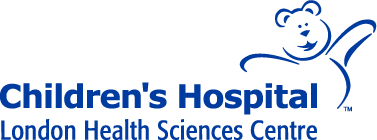Contents
CT Scan (Computerized Axial Tomography)
EEG (Electroencephalogram)
MRI (Magnetic Resonance Imaging)
Skin Biopsy
CT Scan (Computerized Axial Tomography)
A CT scan is a test that uses x-rays and sophisticated computers to generate cross-sectional images (like looking at the slices of a tomato) of the inside of the head or the body.
This special X-ray machine rotates 180 degrees around the head or body to obtain these types of cross-sectional images. The CT machine is shaped like a giant donut standing on its side.
Your child will be asked to lie down on a sliding table. The part of the body being scanned is placed inside the machine (like sliding through the middle of a donut). It is a painless procedure and usually takes approximately 15 to 60 minutes depending on the parts of the body being scanned and if a special dye needs to be used.
Special Preparations
You will be notified by the CT department if there are any special preparations required for your child’s CT scan. If you need any further information, please contact the CT department at Children's Hospital. Their contact information can be obtained through the general switchboard at 519 685-8500.
EEG (Electroencephalogram)
The EEG or Electroencephalogram (pronounced ‘ee-lek-tro-en-seh-fah-lo-gram’) is a harmless diagnostic test that picks up electrical impulses from the brain and records them in a series of wavy lines. This test is a primary diagnostic tool for epilepsy.
To perform an EEG, electrodes are placed on the scalp using gel. Having an EEG is a safe and painless procedure.
It is important for your child to continue taking his/her medications on the day of the EEG. Your child may eat and drink as usual. It is helpful to bring along a bottle or toddler cup with a preferred drink as well.
For example, if your child is bottle fed, a drink prior to the procedure often helps to settle your child during the test. Please bring a favourite quiet toy, such as a stuffed animal or blanket along for comfort. You can also bring a soothing CD (no cassettes) which can be played during the EEG to help keep your child calm. You will be allowed to stay with your child during the procedure.
Special Preparations
Please ask your doctor or nurse practitioner if any special preparations are necessary prior to your child having the EEG. For example, you might be asked to limit your child's amount of sleep the day before or the day of the EEG, in order to get a more accurate EEG. This is known as a sleep-deprived EEG.
MRI (Magnetic Resonance Imaging)
An MRI is a non-invasive procedure that uses a large magnet, radio waves, and a computer to collect data of the inside of the body without using radiation (x-rays). This data is fed into a computer to produce precise images and details of the body and its organs.
An MRI is helpful for diagnosing certain conditions that other tests might not be able to show.
Special Preparations
MRI staff will provide you with instructions about any special preparations or restrictions prior to your child having an MRI, such as eating or drinking.
If you have questions regarding your child's MRI scan please contact the MRI department at the London Health Sciences Centre by dialing the main switchboard at 519 685-8500. Ask to be connected to the MRI department at West Campus.
Skin Biopsy
A skin biopsy is a test that is performed specifically to look for disorders that occur at a cellular level. These are known as metabolic disorders.
During a skin biopsy, a small piece of skin, about the size of a small pea, is taken from the axilla (armpit) area. The skin under the arm contains a rich supply of cells that are helpful for making a proper diagnosis.
This procedure usually takes place in the Paediatric Medical Day Unit (PMDU) or on one of the patient floors. Your child does not need a general anesthetic. An anesthetic cream (a local anesthetic) is applied to the skin approximately one to two hours prior to the procedure to numb the area.
Your child might experience minimal discomfort after the skin biopsy. A small Band-Aid will be placed over the area and it can be removed within 24 hrs. Watch for any signs or symptoms of infection, such as redness, drainage or swelling. Some local redness and inflammation is common for 1 - 2 days after the biopsy.
For more information, talk to your health care professional.



